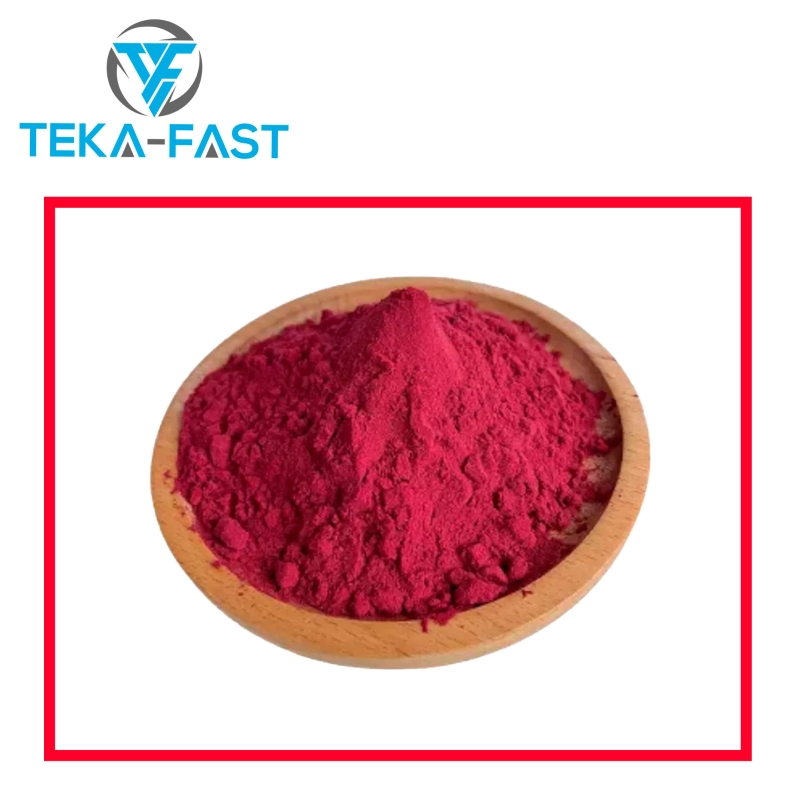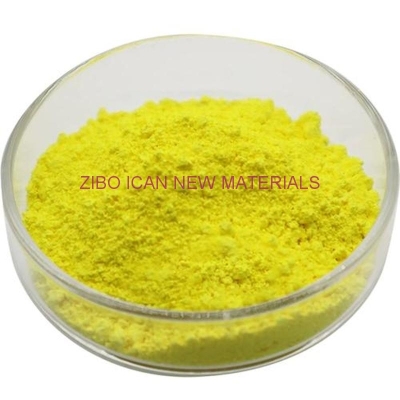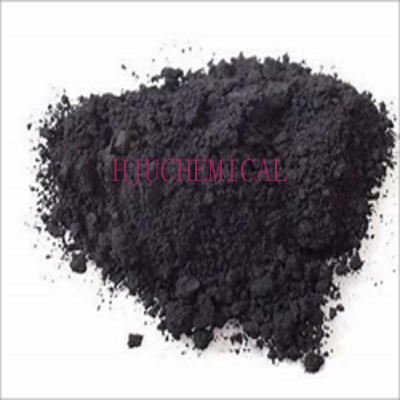Classification of titanium whiteness and its influence factors (2)
-
Last Update: 2020-09-20
-
Source: Internet
-
Author: User
Search more information of high quality chemicals, good prices and reliable suppliers, visit
www.echemi.com
2 whiteness measurement . Whiteness is calculated and measured in a variety of ways, so it is necessary to explain what calculation method to use when comparing whiteness
, because the whiteness values obtained by different calculation methods
are completely different. There are many instruments on the market for measuring
whiteness, and there may be differences in the measurement principles of different instruments, resulting in
different results when the same sample is measured using different instruments.
currently used to measure whiteness are MS-350, ND101-
. DP, ZDB-1, their light source model and angle of view are different, table
is the same sample under different test conditions of the whiteness value, by table 1 can
know that different test conditions have a greater impact on whiteness, therefore, the choice of test party
method has a considerable impact on the whiteness data.. 3 Factors affecting whitenessFor the time being, the factors affecting the whiteness of titanium whiteness are impurities, particle
-size and particle size distribution, particle shape, titanium content, etc., the following are a brief description of these factors
in.3.1 ImpuritiesIn the titanium dioxide process, especially the titanium dioxide process by sulfate, the large
part of the operation is to remove impurities from the product, because the impurities are serious
affecting the application performance of titanium dioxide, especially whiteness. Color-showing metal oxidation
impurities in very low content can affect whiteness, these elements are
iron, manganese, chromium, copper, etc. , these impurities themselves with color, in the white
titanium dioxide is very easy to show color, common impurities and color concentration can be seen in Table 2.in actual production, the limit content of impurity-contaminated titanium dioxide is much more severe than in Table
2, i.e. color can be colored at lower concentrations. In the case of
, when the red Fe3 plus enters the Ti4 plus position, it becomes
-shaped due to polarization, which absorbs more red than normal iron.3.2 particle size and particle size distributionparticle size and particle size distribution is also the main factor affecting the whiteness of titanium dioxide
, it is mainly through titanium dioxide particles on the reflection of light, scattering and other
image effects. Figure 2 shows the particle size distribution of five titanium dioxide samples, in which the
horizontal coordinates are the granularity of the particles, and the ordinate coordinates are the proportion of the titanium dioxide in the body
system, i.e. the frequency, the integration below the curve is 1. The higher the peak of the
curve in the figure, the narrower the peak field, the more left the curve, representing the particle
of the smaller the particle size, the more concentrated the particle size distribution, the better the performance of the
of titanium dioxide.. The average particle size of the five samples in Figure 2 is 0.4 m, 0.55 m, 0.6
m, 0.8 m, 1.0 m, the samples are all
all the same, the samples are measured with MS-350 whiteness tester, and the results from
to 3 are shown in Figure 3.. According to the data in Figure 3, the smaller the particle size of titanium dioxide, the higher the whiteness value of
, which is mainly due to the smaller the particle size of titanium white powder, the larger the surface area, the reflection of light
, diffuse reflection enhancement. Depending on the characteristics of the light wave, the maximum scattering of the color light at that wavelength can be obtained when the
particle size of the pigment particle is less than
half that of the light wave. From this analysis, the best particle size for blue light scattering is around 0.2
m, and the largest particle size for long wavelengths of red light scattering is around 0.35
m. Thus, the scattered light of the small particle size of titanium dioxide is blue phase, while the
through the light is the blue complement red and yellow phase, on the other hand, the large particle size of titanium white
3.3 particle shapeparticle shape refers to the presence of titanium dioxide particles, can be divided into ball
-shaped, rod-like and layered, as shown in Figure 4.spherical particles are spherical or class
spherical, rod-shaped particles cross-section and vertical cross-section is rectangular and circular
or similar shape, layered particles are thinner particle thickness but one side area is
larger. These three particle shapes are common in titanium white powder, the sphere is ideal
state, but due to the coating or gas powder factors may produce rod-like and layer-
shape. Artificial control of gas powder conditions, the production of 3 shapes of titanium dioxide, with
MS-350 whiteness tester to measure whiteness, the results can be seen in Table 3.. As can be known from Table 3, the whiteness of layered titanium dioxide is slightly lower, and the whiteness of spter and rod
is very close, so although the shape of titanium dioxide particles can slightly
affect whiteness, but not the main factor. In production, the shape of particles
mainly affects the gloss, cover power, dispersion and other indicators of titanium dioxide, off
3.4 Titanium content Titanium content refers to the total content of titanium dioxide in titanium dioxide white powder, for pigments
-grade titanium dioxide content is generally more than 90%, specifically in
92% to 98%, other substances are mainly coating agents and a small number of impurities. At present,
according to different applications can choose different types of coating agents, commonly used
coating agents have aluminum coating, silicon coating, tantalum coating, etc. , there are two or more
kinds of coating agents commonly used, such as tantalum aluminum coating, silicon aluminum coating, etc. , these packages
film agent addition manufacturers are not the same. In order to facilitate research, aluminum coating products
are used here, the coating volume is 2%, 3%,
4%, 5%, 6% and 7%, respectively. These samples were measured with an MS-
350 whiteness tester under the same conditions, and the results are shown in Figure 5.as can be seen from Figure 5, with the increase of titanium dioxide content, the white
degree value also increases, that is, the aluminum content increases, the whiteness value decreases, that is, the aluminum
element has the nature of reducing whiteness. In addition to aluminum, vanadium and silicon are also commonly used in
coating agents, they also have similar properties, but the degree of
reduce whiteness varies.. 4 Method to improve whiteness in production in the production and customer use process, all hope that the whiteness of titanium dioxide
can be higher, according to empirical analysis, when the whiteness of titanium white powder increases, its
cover force, color reduction indicators will be correspondingly increased, therefore, to achieve the same
effect using less titanium white powder, the cost will be reduced. There are currently
methods for increasing whiteness in production (for sulphuric acid). 4.1 Raw material selection raw materials are the first step in production, only qualified raw materials can produce
qualified products, titanium dioxide for impurities content is extremely sensitive, sometimes
to be accurate to 1 x 10-6, therefore, the selection of a good source is the most important. Iron,
manganese and vanadium are important impurities, and their contents need to be
tested and precisely controlled. 4.2 Hydrolytic Technology Hydrolytic is an important process in the production process of titanium dioxide by sulfate method, and
is also an important position affecting the whiteness of titanium dioxide. Usually pressurized hydrolysing products of
uniformity is poor, washing speed is slow, the finished product whiteness is poor, and normal pressure hydrolysaling can
to overcome this shortcoming, when the particle shape is uniform, whiteness rises. 4.3 Calcination Conditions Calcination is a process of dehydration, desulfurization, crystal transformation, crystalline growth,
is directly related to the whiteness of the finished product, do not under-burn or over-burn. Generally in front of the
rotary kiln set up a combustion chamber, to prevent high temperature flame direct contact with the
material, and control the temperature, speed and calcination time, according to experience to control the
parameters. 4.4 sanding conditions sanding is the first job in the post-treatment phase, the task is to break the
material for later coating treatment. When the material is too coarse, the coating is not
uniform, too fine will lead to a decrease in the finished product cover, and waste grinding resources,
4.5 coating process coating mode, coating volume, uniformity of the coating, etc. can affect the whiteness of the product
4.6 gas powder condition gas powder is to crush titanium dioxide to the appropriate particle size, the larger the particle size, the worse the
uniformity, the lower the whiteness, the higher the whiteness, therefore, according to the
test will generally crush the finished particle size to 0.2 to 0.35 m. 5 Conclusion Through the analysis of titanium whiteness, we can draw the following conclusions: (1) titanium white powder whiteness is commonly used Ganz whiteness, blue whiteness and Hunter
whiteness to indicate that different whiteness by different applications, and
measurement of whiteness of the instrument there are differences, compared with the need to determine the instrument model. (2) The factors affecting the whiteness of titanium white powder are impurities, particle size and particle size
cloth, particle shape and titanium content, of which impurities are the most serious influence,
times is particle size distribution and titanium content, particle shape has the least effect on whiteness,
the specific effect is that the lower the impurity content, the more concentrated the particle size distribution, the smaller the average
particle size, the higher the titanium content, the greater the whiteness value, the smaller the whiteness.
. .
This article is an English version of an article which is originally in the Chinese language on echemi.com and is provided for information purposes only.
This website makes no representation or warranty of any kind, either expressed or implied, as to the accuracy, completeness ownership or reliability of
the article or any translations thereof. If you have any concerns or complaints relating to the article, please send an email, providing a detailed
description of the concern or complaint, to
service@echemi.com. A staff member will contact you within 5 working days. Once verified, infringing content
will be removed immediately.







